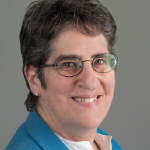 Editor’s note: ACR on Air, the official podcast of the ACR, dives into topics important to the rheumatology community, such as the latest research, solutions for practice management issues, legislative policies, patient care and more. Twice a month, host Jonathan Hausmann, MD, a pediatric and adult rheumatologist in Boston, interviews healthcare professionals and clinicians on the rheumatology front lines. In a series for The Rheumatologist, we provide highlights from these relevant conversations. Listen to the podcast online at acronair.org, or download and subscribe to ACR on Air wherever you get your podcasts. Here we highlight episode 9, “Trends in Scientific Publishing,” which aired on March 17, 2020.
Editor’s note: ACR on Air, the official podcast of the ACR, dives into topics important to the rheumatology community, such as the latest research, solutions for practice management issues, legislative policies, patient care and more. Twice a month, host Jonathan Hausmann, MD, a pediatric and adult rheumatologist in Boston, interviews healthcare professionals and clinicians on the rheumatology front lines. In a series for The Rheumatologist, we provide highlights from these relevant conversations. Listen to the podcast online at acronair.org, or download and subscribe to ACR on Air wherever you get your podcasts. Here we highlight episode 9, “Trends in Scientific Publishing,” which aired on March 17, 2020.
Presenting research in clear, succinct language and sharing it with the medical publishing world is a vital skill for rheumatologists and other physicians, says Daniel Solomon, MD, a rheumatologist and chief of the Section of Clinical Sciences at Brigham and Women’s Hospital, Boston, and a professor at Harvard Medical School, Boston. Dr. Solomon has published more than 500 peer-reviewed papers and is now serving as editor in chief of Arthritis & Rheumatology.
Dr. Solomon shared publishing trends and advice with Dr. Hausmann during an episode of ACR On Air.
Learn from Experience
 As a clinical rheumatology fellow at Brigham and Women’s Hospital almost 30 years ago, Dr. Solomon had his first experience publishing an article. He and his co-researchers completed an 18-month systematic literature review and wrote more than 10 drafts of their manuscript.
As a clinical rheumatology fellow at Brigham and Women’s Hospital almost 30 years ago, Dr. Solomon had his first experience publishing an article. He and his co-researchers completed an 18-month systematic literature review and wrote more than 10 drafts of their manuscript.
“I learned early on that the refinement and pairing back of the written word in science is incredibly important. Get the message clear and concise. My mentor on that work, Jeffrey Katz, MD, MS, is a real pro at that,” he says.
Dr. Solomon also believes that learning how to perform a systematic literature review and critiquing the literature showed him how to become a better researcher.
That first publishing experience taught him how to cope with rejection. Dr. Solomon was dejected after a couple of initial rejections, but that first paper finally found a home. Publishing provides an opportunity for rheumatologists and others in the medical science field to disseminate research and get feedback on it, Dr. Solomon says. Rejections help investigators comprehend what the external peer reviewer understood and liked, what aspects of the paper were not well communicated and how to revise the manuscript for future submissions.
Although a hesitancy in writing may befall trainees struggling with their first paper, Dr. Solomon reminds them of the formulaic approach used for scientific papers. “I often say writing a good scientific paper is like writing a haiku, the Japanese poetry form with rigid rules. We all remember learning about haikus in grade school. There’s a formula, but that formula of a haiku allows one to become creative within a clear structure. I always say the same thing about a scientific paper,” he says.
Writing a good scientific paper isn’t easy, but after you learn the formula, the burden of how to structure the paper is reduced.
How to Become a Better Writer
Dr. Hausmann asked how rheumatologists can become better writers. Dr. Solomon was a liberal arts major in his undergraduate studies, which required a lot of writing. He also had mentors, including Matthew Liang, MD, MPH, Dr. Katz, and Jerry Avorn, MD, who he says are excellent writers.
Learning from the feedback you get is critical. “I always tell trainees that when I make suggestions, to apply those suggestions more broadly. Not just to the sentence at hand, but to the paper or to your writing in general,” he says.
Reading good scientific literature to understand why it’s published in higher level journals can also help with writing. Dr. Solomon encourages rheumatologists who want to publish more papers to volunteer as a reviewer for a medical journal. This experience allows individuals to become familiar with the writing and structure of papers.
Also, staying open minded about critiques of your work can help. “Putting one’s ego aside and then looking at the criticisms in a purely academic sense allows one to better respond and learn from the critiques that we all get,” Dr. Solomon says.
Even with his vast publishing experience, most of Dr. Solomon’s papers have had at least one or two rejections. He processes the critiques and learns from them.
Writing a good scientific paper isn’t easy, but after you learn the formula, the burden of how to structure the paper is reduced.
Find the Right Journal
Dr. Hausmann wondered if Dr. Solomon has a target journal in mind when he starts a new project.
When formulating a clinical research question, Dr. Solomon says he assesses if the results will provide a small, medium or large increment of new knowledge to the medical field. For a large increment of new knowledge, he considers such journals as The New England Journal of Medicine, JAMA or Annals of Internal Medicine. If it’s something of less interest to a general medical audience, but new for rheumatology, he considers such journals as Arthritis & Rheumatology or Annals of the Rheumatic Diseases.
If you are unsure where your research fits along this continuum, Dr. Solomon advises individuals to discuss it with the senior authors who are part of your project.
Dr. Solomon cautions potential authors to avoid predatory journals that require huge fees, provide no peer reviews and have a limited readership. Often, these journals are not credible and not worth the fees. But there are many reputable journals out there.
After getting the results of a study, researchers often have too much data to publish, Dr. Hausmann says. It can be a challenge to decide what to include in the paper.
“I fundamentally think about every scientific paper as a story. Successful papers are clear stories with a beginning, middle and end. There should be some drama associated with every paper,” Dr. Solomon says. “That’s often the hardest part of writing a paper for someone early in their career—how to formulate the story.”
When trainees come in with tables of data, Dr. Solomon asks them what they would share with friends or family about the research. This approach helps determine what the data’s important message is and how to deliver it in a simple, clear manner.
Tables and figures help demonstrate the plot of the story and give juicy details. The discussion allows the author to describe the implications, strengths and limitations.
Rejections
Dr. Solomon discussed some of the steps for the journal review process most papers go through. This process is when editors and external peer reviewers look closely at the science and the writing.
“It might be great data and an important increment—but if the writing’s bad, [the paper] may get rejected,” he says.
If a paper is rejected, Dr. Solomon says he first lets his bruised ego heal. Then, he takes a look at the comments to better understand the critiques. Did the reviewers find the topic or data compelling? Were the analyses and writing confusing, or were there methodologic limitations that could not be managed? As he tries to understand their feedback, he thinks about the next target journal and how to improve the paper.
Dr. Solomon suggests to only sparingly attempt to rebut a rejection because it’s rarely a productive experience. He has done it once in his career.
It’s easy to lose steam on a paper after it’s been rejected once or twice, but Dr. Solomon encourages authors to carry on. “I say, ‘Look, you spent the time, no matter what the reviewer thought, it’s worth getting it published. Let’s consider what the reviewers did not like, shape it up and get it out [for another] review,’” he says. “It’s a matter of finding the right audience and the right journal and listening carefully to the critiques of reviewers.”
How to Get Others to Read Your Work
After a paper is finally published, there’s the challenge of getting others to read the work. Dr. Hausmann asked for tips to encourage greater readership.
Some medical centers highlight research in newsletters or other publications, and many journals have staff who disseminate research findings via social media or podcasts, Dr. Solomon says. When he has a paper publishing in a big journal that offers social media or a video option, he will use these opportunities to deliver his results.
“Some [people] will never read your paper, but they’ll watch the video or see a tweet,” he says.
Although Dr. Solomon describes himself as a bit of a curmudgeon about social media and videos, he’s come around to realizing their value.
Vanessa Caceres is a medical writer in Bradenton, Fla.
More Episodes
A new episode of ACR on Air comes out twice a month. Listen to this full episode and others online at acronair.org. Or download and subscribe wherever you get your podcasts.



